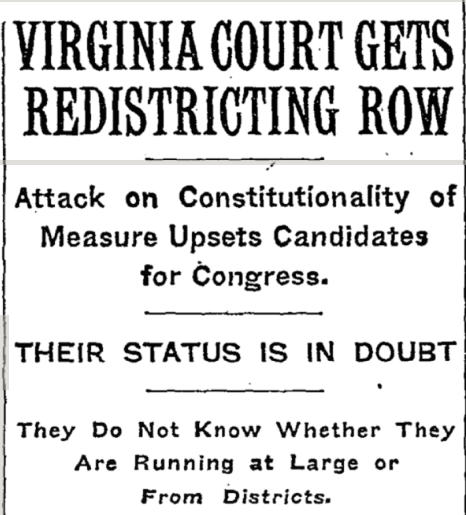
population changes in State Senate districts between 2010-2020 had to be smoothed out in the 2021 redistricting
Source: New York Times, Virginia Court Gets Redistricting Row (October 9, 1932)

population changes in State Senate districts between 2010-2020 had to be smoothed out in the 2021 redistricting
Source: New York Times, Virginia Court Gets Redistricting Row (October 9, 1932)
After the 1930 Census, Virginia lost a seat in the US House of Representatives. The General Assembly had to redraw boundaries to compress ten districts into just nine. One incumbent would obviously not be re-elected.
The General Assembly adopted its new redistricting map in February, 1932. Boundaries of only three districts were changed. The 10th District was abolished, with most of its territory added to the 7th while three counties were placed in the 6th District. That made it less likely the 7th District would elect another Republican, as it had in 1928 before Democrats recaptured the seat in 1930. The boundaries of the 2nd District were not modified, even though it had elected a Republican in 1928 and re-elected him in 1930. Similarly, the 9th District boundaries were left intact, though Republicans often won seats in the "Fighting Ninth."1
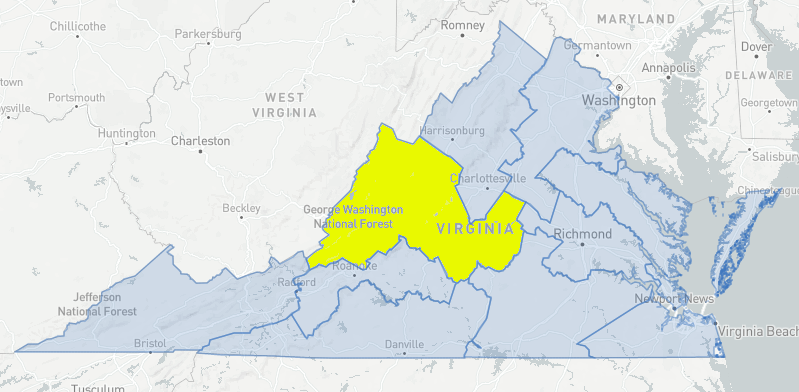
the 10th District (yellow) was eliminated in the initial 1932 redistricting map, later invalidated by the Virginia Supreme Court of Appeals
Source: Jeffrey B. Lewis, Congressional District Boundaries
Just three weeks before the November election, the Virginia Supreme Court of Appeals invalidated the boundaries. The 7th District had 337,000 people, while the 8th District had only 184,000 residents. The state's Supreme Court ruled that the boundaries violated Article IV, Section 55 in the state constitution, which at the time applied only to redistricting boundaries of US House of Representatives districts:2
The two Republicans who initiated the successful lawsuit had filed at-large candidacies for Congress. In the 1932 election, all 24 candidates seeking one of the nine seats in the US House of Representatives ended up having to run as statewide candidates. The nine candidates with the greatest number of votes, statewide, took office in 1933 at the start of the administration of Franklin D. Roosevelt.
All nine elected at-large were Democrats. The one Republican incumbent, Rep. Menalcus "Mank" Lankford, might have won re-election in the 2nd District if votes from just that area had been counted, but in statewide races in the 1930's the Democrats had a solid majority.2
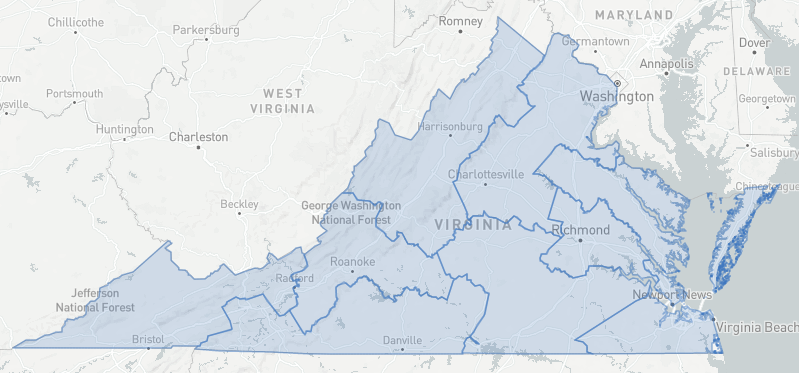
after the 1932 elections, the General Assembly created nine districts for US House of Representatives seats
Source: Jeffrey B. Lewis, Congressional District Boundaries
The 1932 election was not the first in which Virginia chose a member of the US House of Representatives via an at-large election. After the 1880 redistricting, Virginia gained a tenth seat. The old district boundaries were used to elect nine members in 1882, and the tenth was elected at-large.
John Sergeant Wise, the Readjuster candidate, won the tenth seat in a close election over his Democratic opponent. Most Republicans supported Wise, but the "Straight Republicans" also nominated a candidate in 1882. John M. Dawson, a formerly enslaved man who had been elected to serve one term in the State Senate in 1873, received 2% of the total vote.3
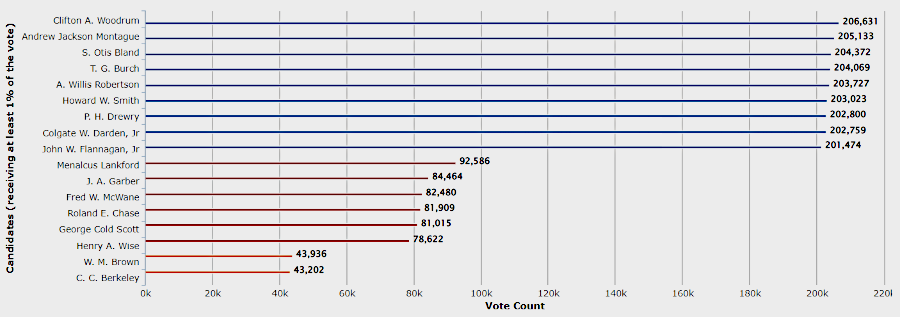
in the 1932 elections, Democrats won all nine seats
Source: Virginia Department of Elections, 1932 U.S. House General Election
Even earlier, in 1869 Virginia elected eight members from defined districts plus a ninth member to the House of Represenatives. The state's population, as calculated after the loss of West Virginia, entitled Virginia to eight members rather than the 11 based on the 1860 Census.
Virginia proceded to elect a ninth member at-large anyway, and Conservative Joseph Segar defeated Republican A. M. Crane. The House of Representatives officially declared on July 11, 1870 that it would not seat him.4
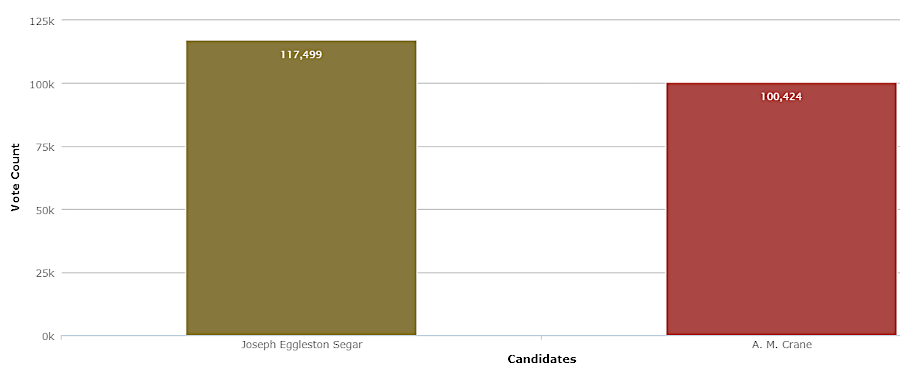
in 1869 Virginia elected Joseph Segar at-large to serve as the state's ninth member in the US House of Representatives, but he was not seated
Source: Virginia Department of Elections, 1869 U.S. House General Election - At Large